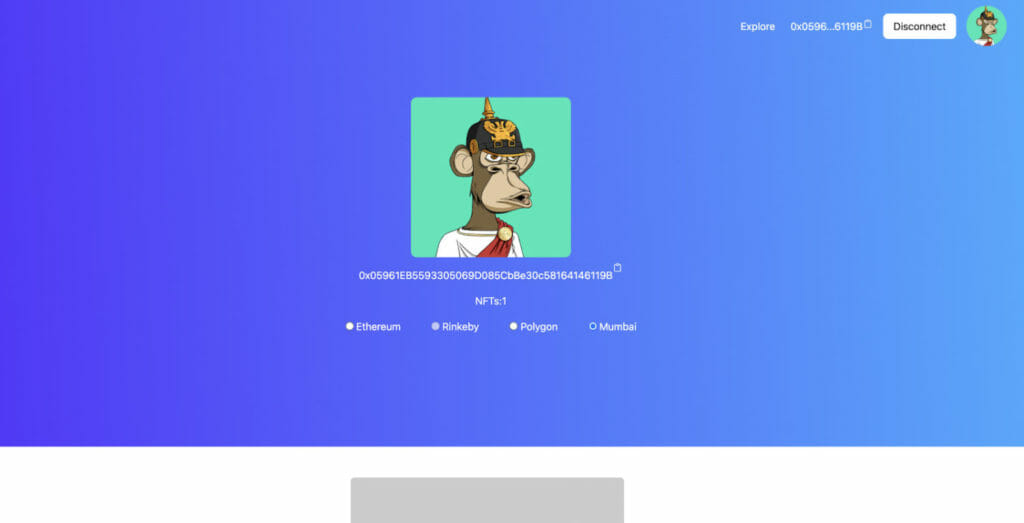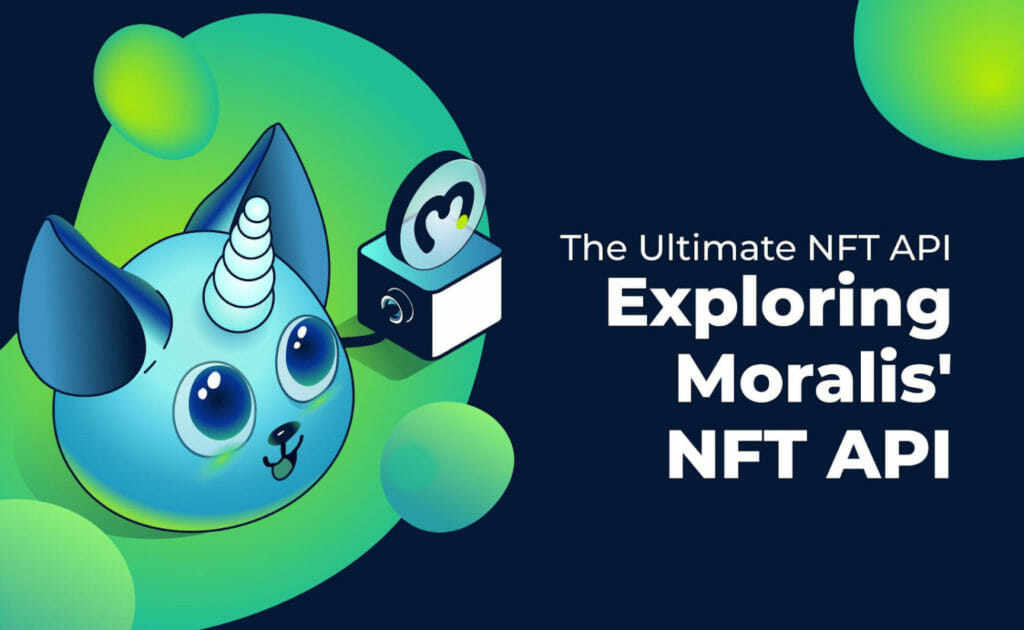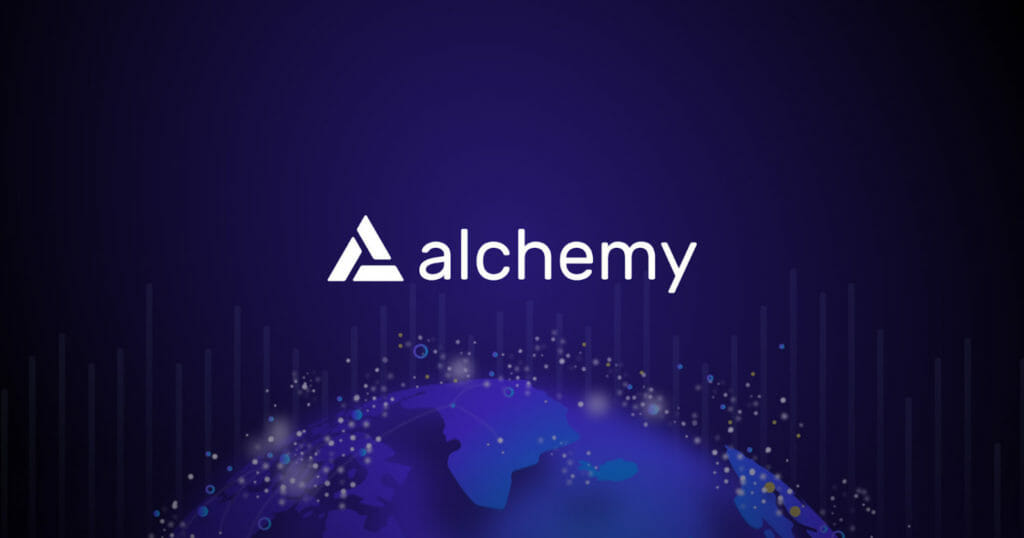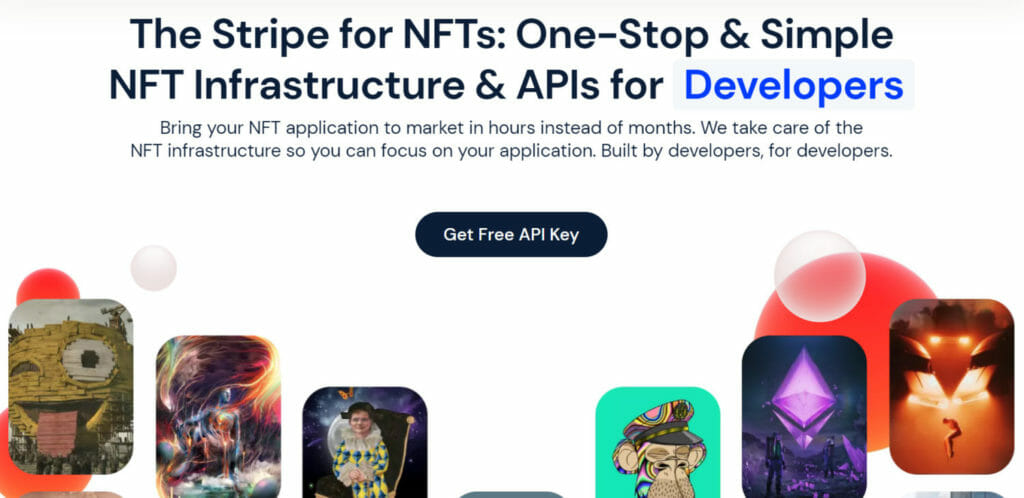and the distribution of digital products.
5 Best NFT APIs to Track all the NFT Data
NFTs, or Non-fungible tokens, are becoming increasingly popular as developers and investors learn to use them in digital and real-world contexts. As a result, this is a perfect opportunity to dive into blockchain and learn how to incorporate the NFT functions. Furthermore, with the correct tools and knowledge, such as the NFT API, combining NFTs into your dApp may be done swiftly and efficiently. Today, in this article, we’ll take a deeper look at the present blockchain market’s ultimate NFT API by investigating the 5 best NFT APIs.
Summary- NFTs are a subcategory of crypto tokens. Since they are non-fungible, they have a wide range of application cases and incorporate uniqueness.
- Like any API, NFT API allows the software to connect to other software.
- QuickNode, Moralis, Alchemy, and NFTPort are a few of the most used NFT APIs.
- API has a monthly subscription that ranges from $0/month to up to $299/month, with each API having its own pros and cons.
Also read, A Buzz Around Non-Fungible Tokens
What Are NFT APIs?Non-fungible tokens, or NFTs, are a subset of crypto tokens. As the term “non-fungible” indicates, they incorporate uniqueness and have a broad range of application cases. Unless you’ve been living under a rock, you’re aware that digital art collectibles have recently made the news. Aside from art and collectibles, NFTs are already playing an essential role in decentralized gaming. NFTs can represent various in-game items, such as skins, tools, potions, and characters.
Furthermore, NFTs are a game-changer in terms of the “play-to-earn” notion. However, the NFT API, which stands for Application Programming Interface, is, like any other API, just an interface that allows the software to connect with other software. They make the backend information collection process easier.
An NFT API is a critical component of any NFT dapp. You’ll need a dependable API to construct an NFT game, an NFT marketplace, a wallet, an analytics site, or any other NFT-related dApp. This, for example, enables you to obtain items such as
- Metadata for NFTs
- NFT Prices
- Transfer Data
- NFT Ownership Data
 NFT APIs
Bitquery: The most flexible NFT APIs
NFT APIs
Bitquery: The most flexible NFT APIs
The developer-friendly Bitquery NFT API offers non-fungible token holders real-time access to blockchain data and analytics (NFTs). For developers, companies, and researchers who need to access and analyze NFT data on different blockchain networks, it is a complete solution.
Read Bitquery Docs here
Bitquery FeaturesDevelopers can quickly query and filter NFT data using a variety of parameters, including contract address, token ID, token name, and token symbol, using the Bitquery NFT API. The NFT ownership, trading, and market activity data, as well as historical data that can be used for trend analysis and research, are all accessible through the API.
The ability to retrieve data from various blockchain networks, such as Ethereum, Binance Smart Chain, and Polygon, is one of the distinctive features of Bitquery NFT API..
How to Get Started?- Sign up for an account: Visit the Bitquery website and sign up for a free account. Once you have created an account, you will be able to access the API documentation and generate API keys.
- Understand the API documentation: The Bitquery NFT API documentation provides detailed information on how to use the API, including the available endpoints, request parameters, and response formats. Make sure to read through the documentation to understand how to use the API.
- Generate API keys: After creating an account, generate an API key to authenticate your requests. The API key will be used to identify your account and grant access to the API.
- Test the API: Once you have generated an API key, test the API by making requests to the available endpoints. You can use a tool like Postman to test the API endpoints and verify that you are able to retrieve NFT data.
- Integrate the API: After testing the API, integrate it into your application or platform. Depending on your use case, you may need to use a programming language like Python or JavaScript to send requests to the API and process the response data.
 GET STARTED WITH BITQUERY NOW!
QuickNode: 2nd Best NFT APIs
GET STARTED WITH BITQUERY NOW!
QuickNode: 2nd Best NFT APIs
QuickNode is a global team with more than 40 years of experience running data centers and high-speed networks, and distributed systems. Auston Bunsen started the firm alongside Alex Nabutovsky. Users use the QuickNode NFT API to discover any NFT, verify ownership, and retrieve transaction history and key collection information without filtering through individual intelligent contracts.
It is also well-known for the scalability of its blockchain ecosystems and the accessibility of its fundamental infrastructure. The firm creates compelling blockchain applications that scale as the number of users increases. QuickNode has every utility tool available for users through a simple control panel, from flexible APIs to sophisticated tools and analytics.
Features of QuickNode- QuickNode API assists users in obtaining NFT metadata rather than requiring developers to parse individual smart contracts, sort through irregular data sets, and go through the time-consuming task of cleaning.
- QuickNode’s NFT API Add-On normalizes the data, making it searchable and accessible.
- With simple API, even non-technical people can query across several projects with a single request, saving time and money.
- Webhooks incorporated into QuickNode’s NFT API Add-On enable applications to automatically receive changes and transmit events.
Follow the below-mentioned steps to get started with the QuickNode:
- After logging in, users can see a dashboard where they can Create Nodes with other options such as Add Team Members, Get Support, and Manage Your Nodes
- By clicking on the node, users will be sent to the Node dashboard which displays the Web3 URLs.
Moralis NFT API offers a well-managed backend service for blockchain applications. A few of the services are:
- Automatically synchronize the users’ balances into the database
- letting the users set up on-chain notifications
- monitor smart contract occurrences
- construct indexes, and much more.
All functions are accessible via a simple SDK. By default, all of Moralis’ features are cross-chain. It has one of the quickest ways to design and deploy dApps on Ethereum, BSC, Polygon, Solana, and Elrond, with other networks on the pipeline. By default, all Moralis dApps are cross-chain.
 Moralis
Features of Moralis
Moralis
Features of Moralis
- The Moralis Server is at the heart of any dApp created with Moralis. It is what, in conjunction with the Moralis SDK, allows the users to quickly develop a dApp with user authentication and blockchain data like user token balances, NFTs, transactions, and events.
- Moralis Cloud Code provides customers with a variety of valuable and fascinating features. Users may use the cloud code to build JavaScript functions that can be activated by either invoking it from your dApp when specific circumstances occur or via a scheduled task.
- The Moralis SDK connects all of the workings of Moralis. Users may use the Moralis SDK to authenticate themselves using either a username and password or a crypto wallet such as MetaMask.
Moralis dApp is used to accelerate the development of off-chain infrastructure. It is a packed solution that includes all of the functionality that most dApps require to be up and running as quickly as possible.
The following are the steps to get started in the Moralis NFT API:
- Create a free API account by heading to the Moralis after signing up in the API.
- In the upper right corner, click Create a new server. Moralis is used to create dApps for mainnets, testnets, and local devchains.
- Choose Dapp Networks
Now that you have your server visible in your dashboard, you can go on to develop a web app that communicates with the server and can log in, get the data, and do a variety of other things.
GET STARTED WITH MORALIS Pricing Alchemy: 4rth Best NFT APIsAlchemy NFT API enables customers to instantly obtain all of the information they want regarding NFTs from Ethereum, Polygon, Flow, and other blockchains. Users may now submit a single request to retrieve specified NFT information for both ERC-721 and ERC-1155 tokens, such as All NFTs held by an address Metadata and attributes for a given NFT token, rather than searching, indexing, and storing data themselves.
 Alchemy
Features of Alchemy
Alchemy
Features of Alchemy
- Alchemy offers Supernode, an infrastructure engine that replaces the usual self-hosted blockchain node, with unrivaled benefits such as 1,000+ engineering hours saved each year, Dynamic Scalability, and 100 percent Data Correctness.
- The Alchemy API is a comprehensive set of developer tools that allows users to spend less time debugging and more time creating, with 25% quicker product development and Mempool Visualizer, which enables users to observe the real-time state of transactions in the mempool.
- Alchemy Monitor provides users with all the information that they need to assess the health and growth of a user’s app.
- Alchemy Notify sends out timely alerts for the most significant Web3 events. It has increased the user experience, engagement, and retention. It also reveals transactions that have been mined and dropped.
The following is a quick start guide to Alchemy:
- Users will be requiring an API key to authenticate the requests using Alchemy’s products. It can be generated via the dashboard.
- Using JSON-RPC and the command line, users may generate a request and communicate with Alchemy’s Ethereum infrastructure provider.
- In the next step, set up Alchemy as your Client. If you already have a client, replace the current node provider URL with an Alchemy URL.
Check out the website’s tutorials to learn more about Alchemy and blockchain development. The Dashboard Demo App allows you to put your dashboard knowledge to the test.
GET STARTED WITH ALCHEMY Pricing NFTPort: 5th Best NFT APIsNFTPort API is like a One-Stop, simple, and developer-friendly NFT Infrastructure and APIs to assist developers in bringing their NFT apps to market in hours rather than months. POAP, Hashtag Protocol, and Wolf3D are among the projects that NFTPort supports. NFTPort was created by an ex-NATO, Nvidia, and Monese team and is funded by the Co-Founders of Polygon, Skype, and Wise.
 NFTPort
Features of NFTPort
NFTPort
Features of NFTPort
NFTPort offers three primary solutions that simplify the developer experience and accelerate NFT application development. They are:
- Users get access to all Ethereum, Polygon, and Tezos NFT data. Metadata, transactions, files, and so forth are all included. With only a few simple API calls, the users can obtain all of the information.
- The user may convert anything into an NFT for free using NFTPort minting APIs in less than 120 seconds. There is no need for prior blockchain experience, no upkeep, and utilizing Polygon does not hurt the environment because there is no electricity-hungry mining.
- NFTPort provides expanded Text Search APIs, removing the need for customers to create their own NFT database.
Users can use NFTPort API to do multi-chain NFT searches, receive NFT suggestions, and detect counterfeit NFTs. There is no prior blockchain experience required. The following is a step-by-step guide to get started.
- Conducting a Multi-Chain NFT Search: End-users may use the NFTPort Search API to execute sophisticated searches using a text query across several chains. Set the Content-Type to application/JSON and the text to the desired search query. To perform a search in a specific collection, set a filter by contract address.
- NFT Recommendations: With the help of state-of-the-art computer vision AI, users can use the NFTPort Recommendations AI API to retrieve visually and contextually similar pictures to the input image supplied with the URL or uploaded file.
- Verifying the Authenticity of NFTs: Users can detect counterfeits and validate the validity of an NFT by using our Duplicate Detection AI API. Using cutting-edge computer vision AI, NFTPort API analyses the input picture supplied with the URL or uploaded file and returns duplicates such as counterfeits against it.
NFTs are not only challenging the digital art, collectibles, and gaming sectors, but they also have the potential to provide other use cases outside of the digital realm. As a result, now is the moment for developers to hone their NFT development abilities. With the information in this post, you’ll be able to choose the best NFT API in conjunction with various features to speed up your Web3 development. With the different features, you’ll be able to devote your full attention to developing the most user-friendly NFT apps while also saving time and resources.
Frequently Asked Questions What is an NFT?A non-fungible token is a non-transferable unit of data that may be sold and exchanged on a blockchain, which is a type of digital ledger. NFT data units of various types can be connected with digital assets such as images, movies, and music.
Why do I need the NFT API?1. NFT APIs are required to connect programs in order for them to fulfill a pre-defined NFT-based function on sharing data and executing pre-defined procedures.
2. They serve as a go-between for developers, allowing them to create new programmatic connections across the many programs that individuals and companies use on a regular basis.
Quicknode, Moralis, Alchemy, and NFTPort are a few of the most used NFT APIs.
What is the cost of NFT API?Each NFT API has its own pros and cons, and its monthly subscription is as low as $0/month to as high as $299/month.
Also read,
- Home
- About Us
- Write For Us / Submit Content
- Advertising And Affiliates
- Feeds And Syndication
- Contact Us
- Login
- Privacy
All Rights Reserved. Copyright , Central Coast Communications, Inc.